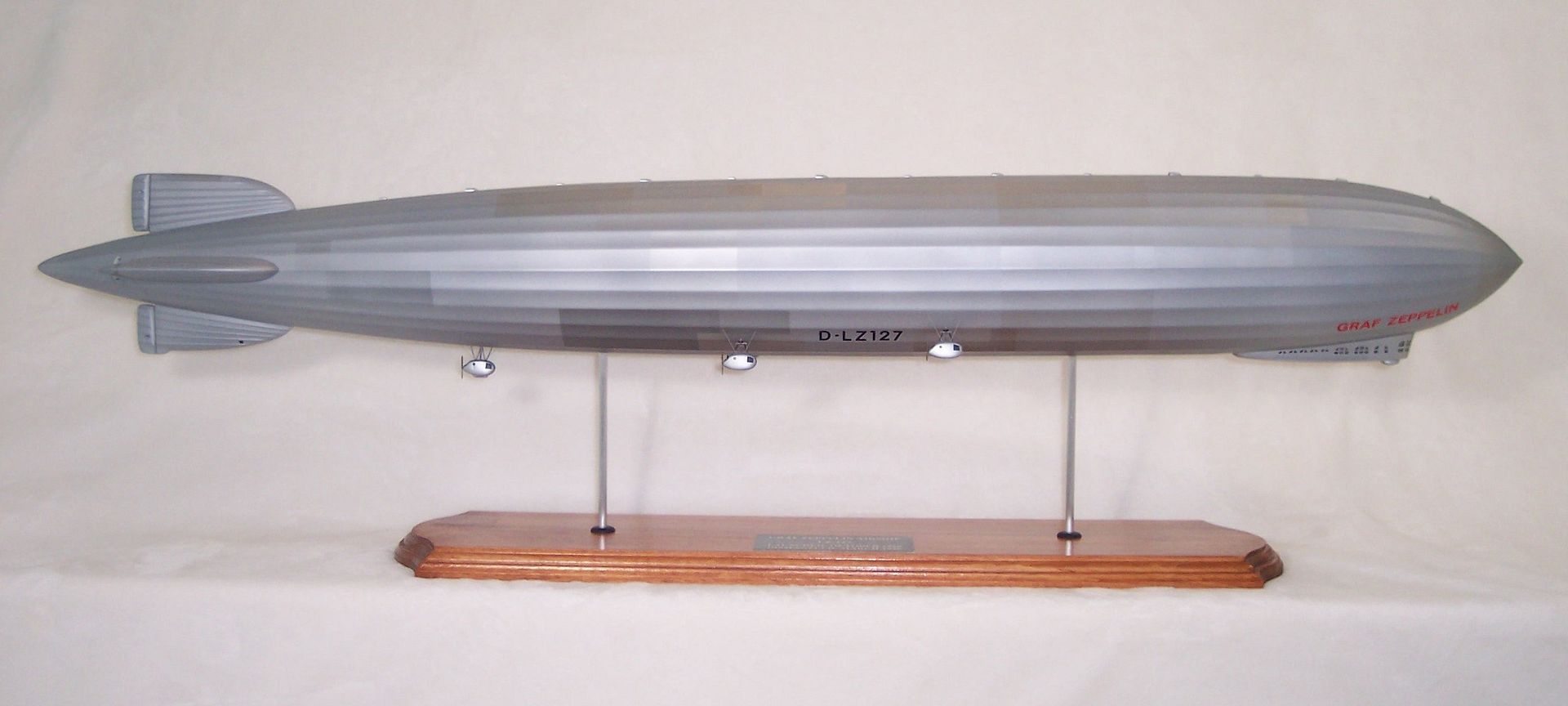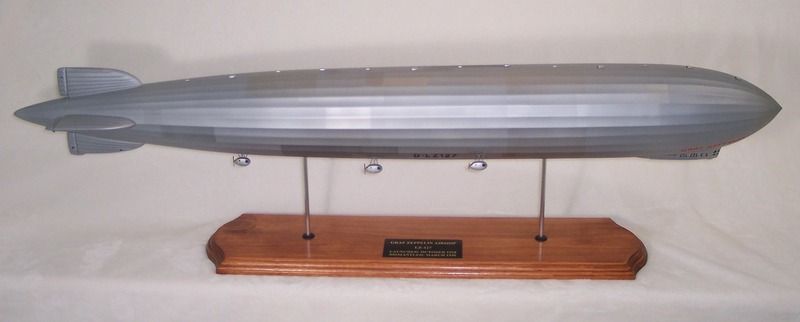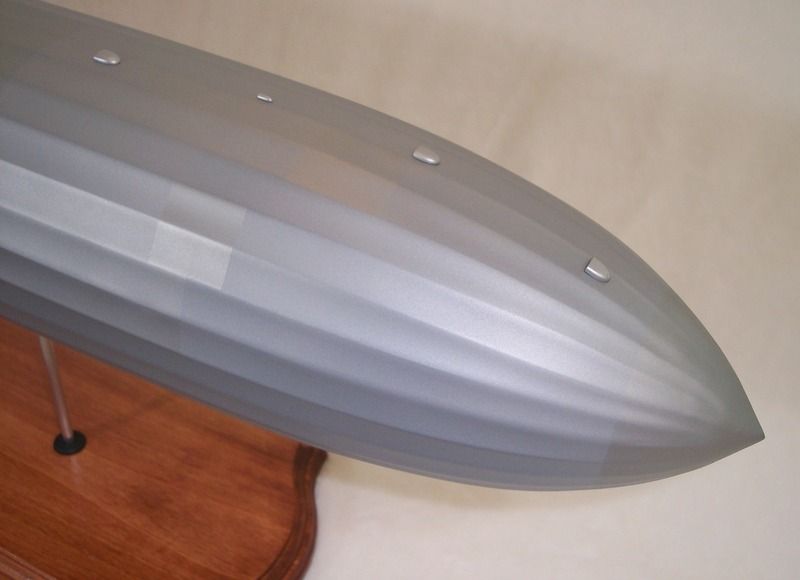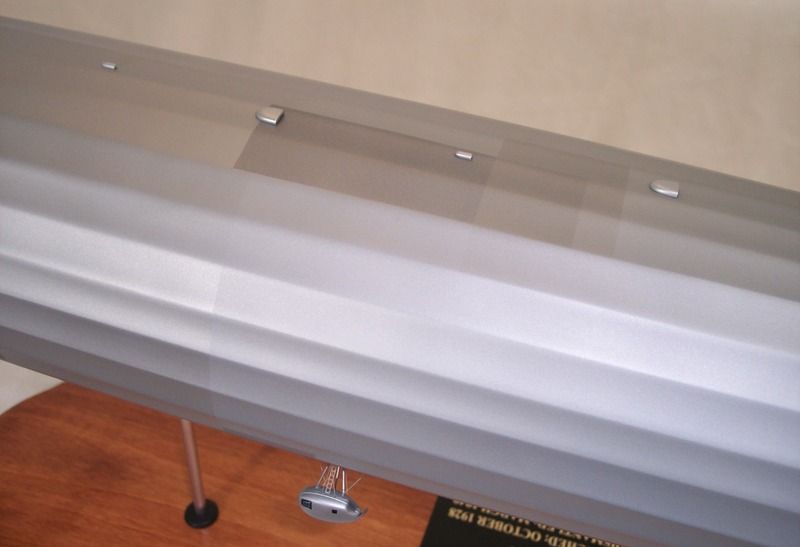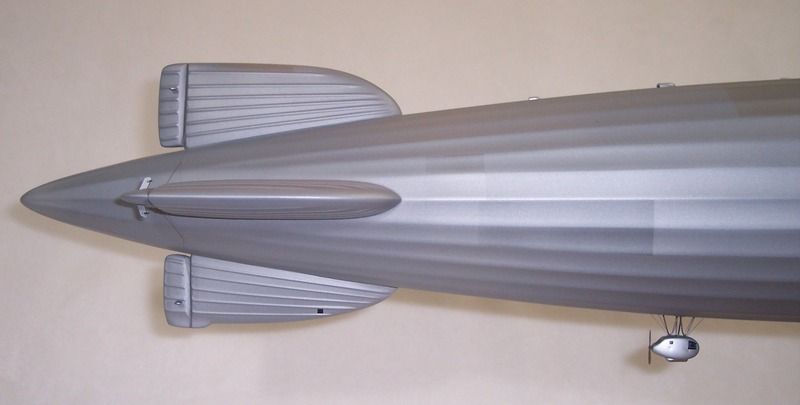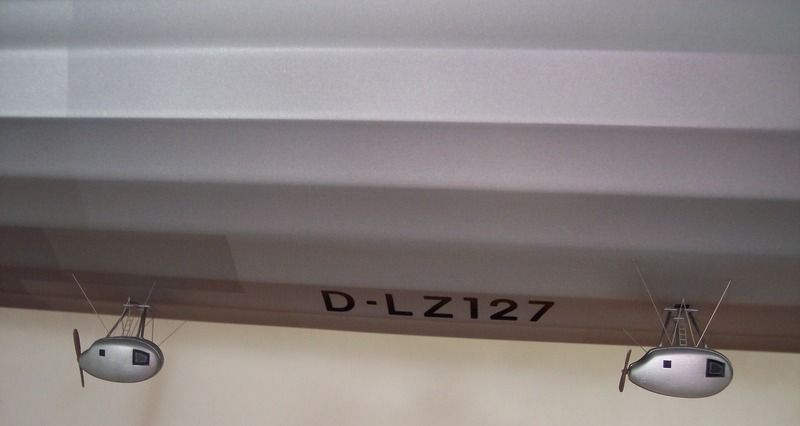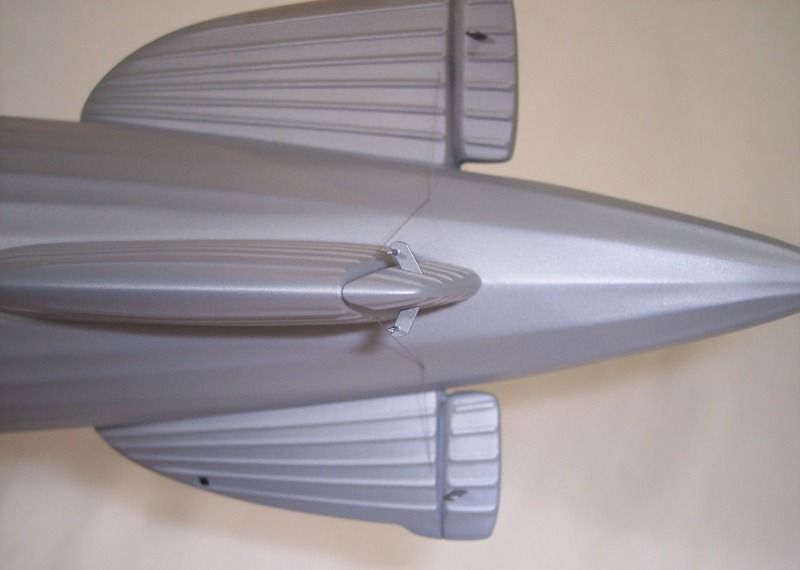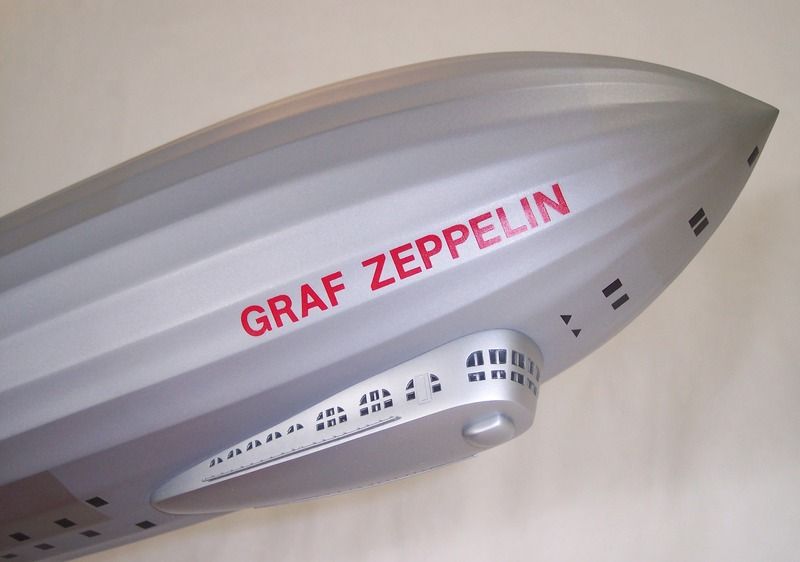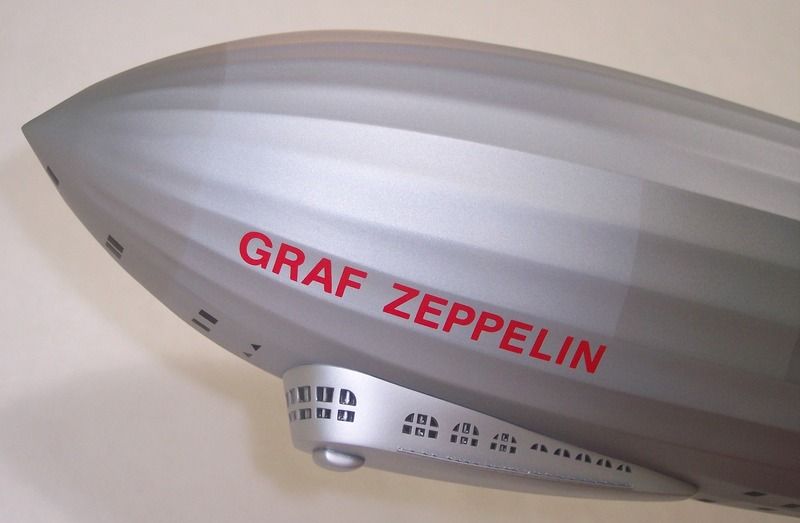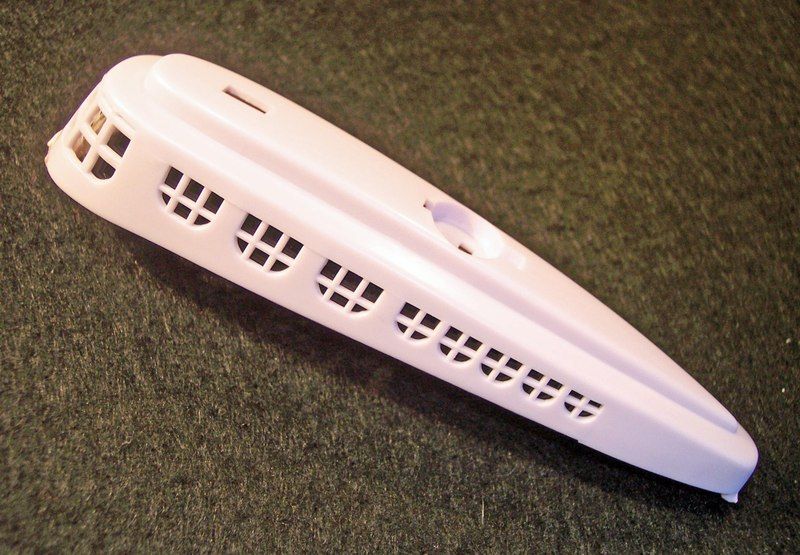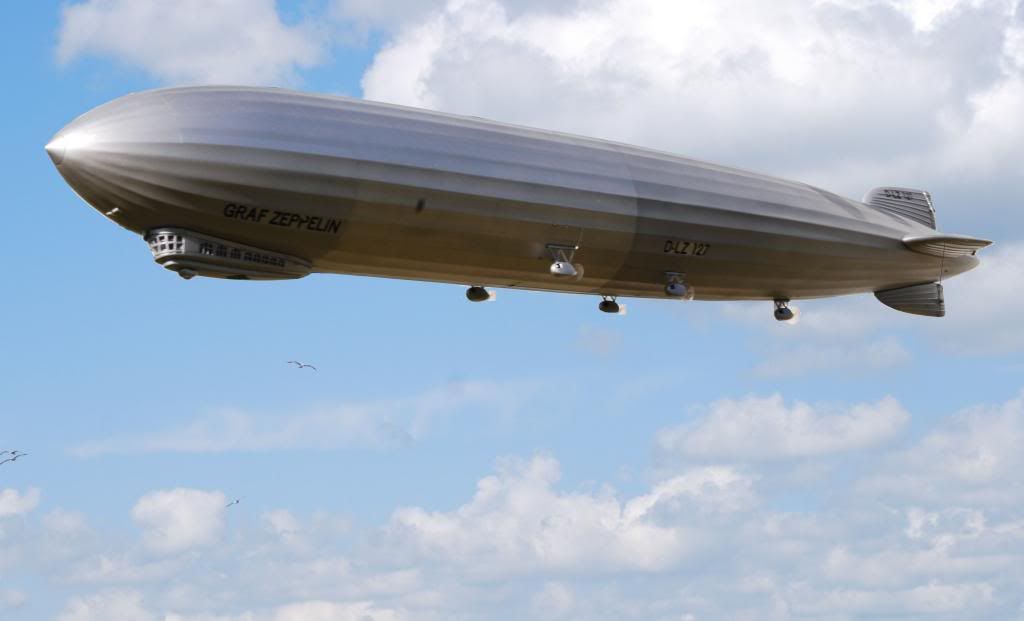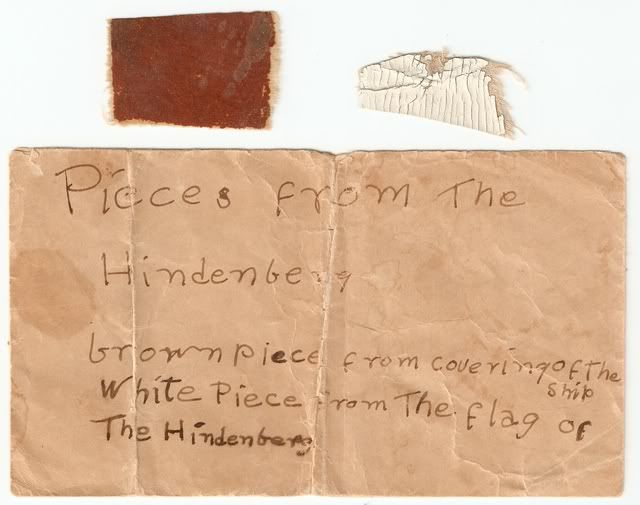Greetings Fellow Modelers,
Below are photos of my Hawk/Lindberg 1/245 scale (38.5” length) German 1930’s civilian airship Graf Zeppelin. The kit was first issued in the late 1960’s by Hawk Model Company, and featured thin vac-formed main hull halves and soft vinyl plastic engine parts. In 1976, Testors Corporation re-issued the same kit in a different box. I always wanted to add this great looking zeppelin to my collection, but the vac-form parts never let me get past the dreaming stage. In 2007 Lindberg’s newly tooled “re-issue” of the same kit that replaced the vac-form hull with hearty injection molded plastic, although the soft vinyl engine parts remained. It is a very simple kit with only a few pieces (53 total) and the details are not very accurate. Most of the time I put in the project was in correcting the toy-like gondola and engines. Listed below are several things I did to improve the kit:
Modified and cut down the kit gondola
Replaced the kit engine struts with small diameter wire
Added small diameter guy wires to the engine housings/tailfins
Scratch built gas-shaft/air vent covers located on top of the hull
Scratch built engine propellers
Added photo-etched access ladders to the engine housings
Used Woodland Scenics dry transfer decals in place of the kit decals
In painting the hull it was first covered with Model Master primer to produce a uniform finish and conceal any tiny scratches. Alclad II dull aluminum was applied for the base color since it had a “gray tone” look. The “patch-panel” effect was achieved by masking various size squares and rectangles randomly all over the hull, then painting them Alclad II aluminum, Alclad II polished aluminum, Alclad II dark aluminum and Model Master dark anodonic gray. Finally, an overspray of dull aluminum was added to make the patch-panel effect more subtle. I hope you enjoy the photos.
Phillip1
